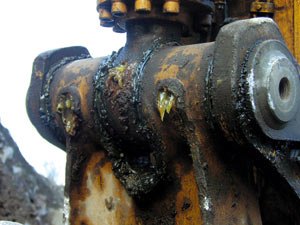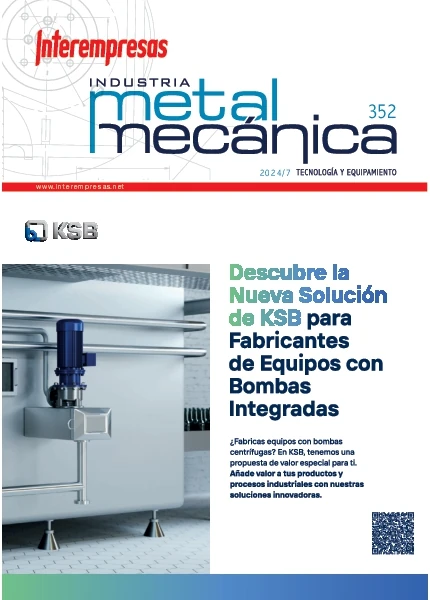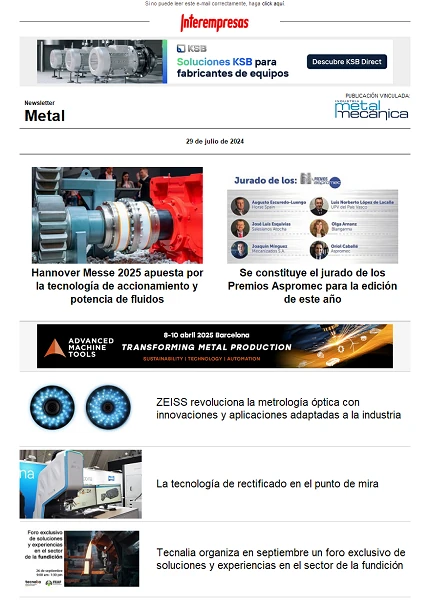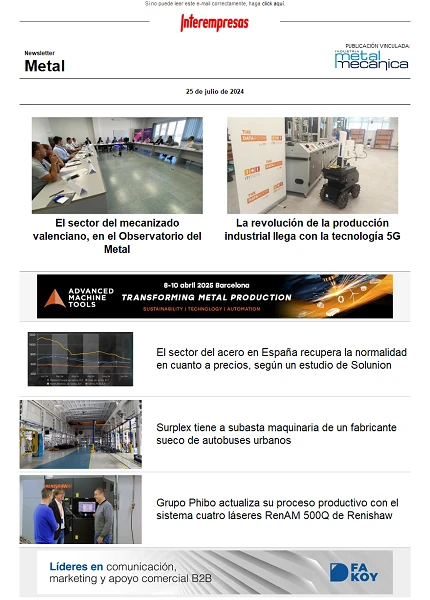Why and how to use the biolubricants?
Javier belly and Amaia Igartua. Fundación Tekniker
15/02/2004
At present exist several basic fluids with which can formulate biolubricantes. The big majority are based in vegetal oils (especially rapeseed oil and sunflower) and synthetic esters formulated from vegetal oils modified or with intermediate petrochemicals. Also they commercialise poliglicoles.
By the moment does not exist a universally accepted definition to define the biolubricantes. They exist several ecoetiquetas and normative as they are the Blue Angel (Germany), Nordic Swan (Nordic countries) or the Swedish Standards. LLINCWA Is a project of the EU in which they have defined some exigencias minimum regarding the final product. They have followed some similar criteria to the ones of the regulation Vamil (Low Countries). It has adopted a pragmatic approach that combines the scientific analysis with the need to unify the existent national politics.
All the biolubricantes have several clear advantages in comparison with the lubricantes based in mineral oils:
- High degree of biodegradabilidad
- Low toxicity for the human being and aquatic organisms
- Good properties of lubricación
- High index of viscosidad
- high Flashpoint
- Good adhesion to the metallic surfaces
• Avoid the pollution of the surroundings
47% of the lubricantes pour directly in the surroundings. The derivative products of the oil can contaminate the groundwater during more than one hundred years. Besides, small quantities of mineral oils can prevent the growth of the trees and be toxic for the aquatic life.
• Greater hygiene for the hard-working
The biolubricantes present a better compatibility with the leather that the mineral oils, causing a drastic reduction of the problems dermatológicos because of his manipulation. Likewise, a greater flashpoint reduces the risks of fires. The biolubricantes also possess a lower broadcast of volatile organic compounds toxic by inhalation.
• Lower civil responsibility by escapes or downloads
A good example is the case of a poured accidental of a hydraulics fluid (vegetal base) that took place in the Everglades of Florida. A year after the poured the area contaminated had regenerated without resorting to efforts of aggressive recovery of the floor, of the water neither of the population piscícola.
• Prolong the useful life of the tools
The greater lubricidad of the biolubricantes produces lower friction and the greater index of viscosidad can have as resulted a transmission of the most efficient heat. These characteristic can have like effect an useful life longer of tools of cutting and conformed. They exist numerous examples (bent and cutting of tube, filling and tooling of sheet) in which the utilisation of biolubricantes has supposed a clear economic advantage because of this factor.
• Less losses of oil
A higher flashpoint of the biolubricantes in comparison with the lubricantes derivative of the oil produces fewer losses by evaporation. Besides, because of his best adhesion to the metallic surfaces, the biolubricantes present fewer losses of oil.
• Easily lavables
In numerous occasions the waste generated by mineral oils have to be deleted of the pieces manufacturadas using complex processes of cleaning. The elimination of biolubricantes is used to to be less complicated because of the high solubility in water of many of these products.
• Develop economic rural
In addition to his physical advantages, the biolubricantes based in renewable resources offer big possibilities for the rural economic development. Since the vegetal oils are available raw materials in Europe, the European agriculturalists could benefit of a greater demand of his products.

Switch from conventional lubricants to biolubricants not always is a simple matter of replacing a kind of lubricant on the other. In addition, not all biolubricants have the same benefits. So that the change has a satisfactory result be particular attention to the characteristics mentioned below.
• Stability against oxidation and thermal stability
Oils with low values of stability to oxidation oxidarán quickly at high temperatures, producing acids and waste. This waste can accumulate in critical areas of the team, and interfere with the functions of lubrication and cooling of the fluid. Oxidized oil also generates problems of corrosion in the teams. In general, vegetable oils do not have a good resistance to oxidation, while vegetable oils with high content of oleic possess an acceptable stability in a wide range of applications. The poliglicoles and synthetic esters are generally more stable than most vegetable oils. Some properly formulated synthetic esters even show a stability to oxidation over the lubricants based on mineral oils.
• Behavior at low temperature
The fluidity at low temperature of fluids with vegetal is lower than other biolubricants. When the oil solidifies performance is reduced drastically. However, the behavior at low temperature of fluids with vegetable base (especially those derived from rapeseed oil) may be acceptable for most applications. This can be critical in application pool in the Nordic countries.
• Hydrolytic stability
It is a point to bear in mind especially if you intend to use synthetic esters and, to a lesser extent, whether vegetable oils will be used. The hydrolytic stability of the commercially available biolubricants is increased by the addition of specific additives.
• Compatibility with the components of the system
Provided that you change of lubricant in a system should ensure that the product is not incompatible with materials, paints, gaskets and sealants. In the case of the biolubricants, it is a point to keep in mind when we deal with poliglicoles. The extensive practical experience with vegetable oils show that there are relatively few problems. However, always consult the supplier to obtain specific details of compatibility with all the materials that are in the application.
• Compatibility with filters
No special filtering elements for vegetable oils and synthetic esters are required. In general, want to use fiber glass or metal mesh filters when using biolubricants. When it happens to use biolubricants, filters should be checked a few hours after being installed as the biolubricants tend to "eliminate" existing in the system deposits of mineral oil and transport them to the filters.
• Foaming
The trend of oils to form foam can be a serious problem in lubricating systems and hydraulic. The characteristics of the oils are very affected by excessive foaming. Laboratory tests have shown that most of the formulated biolubricants present no major problems here. Through a correct additivity is easily controllable.
• Residual mineral oil
When it is shifting to biolubricants are advised extract all mineral oil system and, if possible, perform a rinse. In the case of the poliglicoles, a 1% of waste is acceptable. In the case of vegetable oils and synthetic esters are allowed a residue of mineral oil up to 2%.
Tips for operators who are considering changing to biolubricants
- Make sure that the supplier knows the advantages and disadvantages of the biolubricante.
- Consult the OEM manufacturers before you buy a biolubricante.
- An empirical rule: usually vegetable oil-based lubricants are used in open applications and low technological level. For more sophisticated applications probably should opt for synthetic esters and, in some cases, the poliglicoles.
- Check with the supplier the operating temperature range and hydrolytic stability of the biolubricante.
- We recommend using epoxy resin paints when using biolubricants.
- Polyurethane parts should not be used when use of biolubricants. Instead wear Viton and Bunna N (content medium or low nitrile).
- You must carefully control indicators of clogging of filters.
- The poliglicoles in facilities containing aluminum are not recommended.
- The biolubricants classified as 1a and 1b according to ASTM D 130 are compatible with copper alloys.












































































